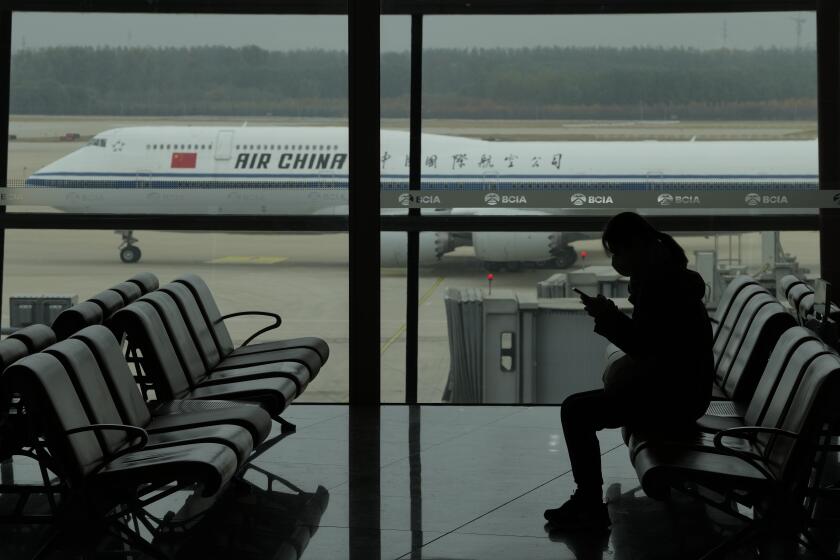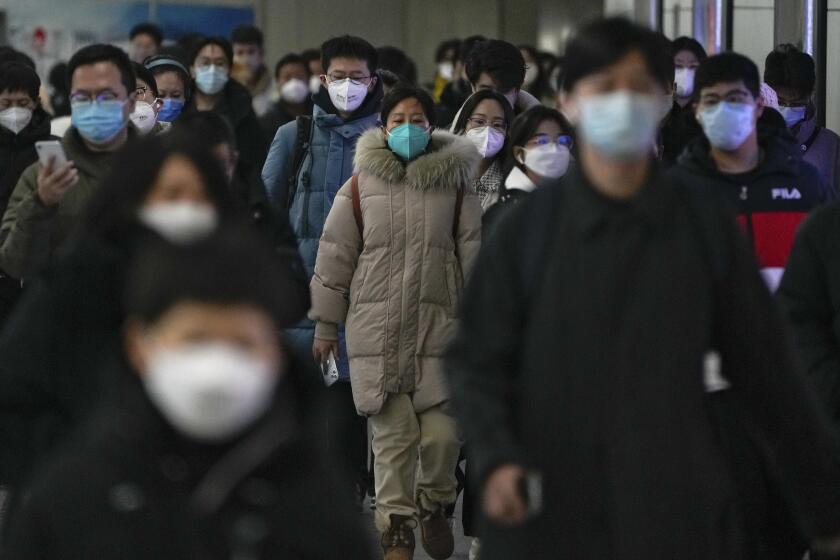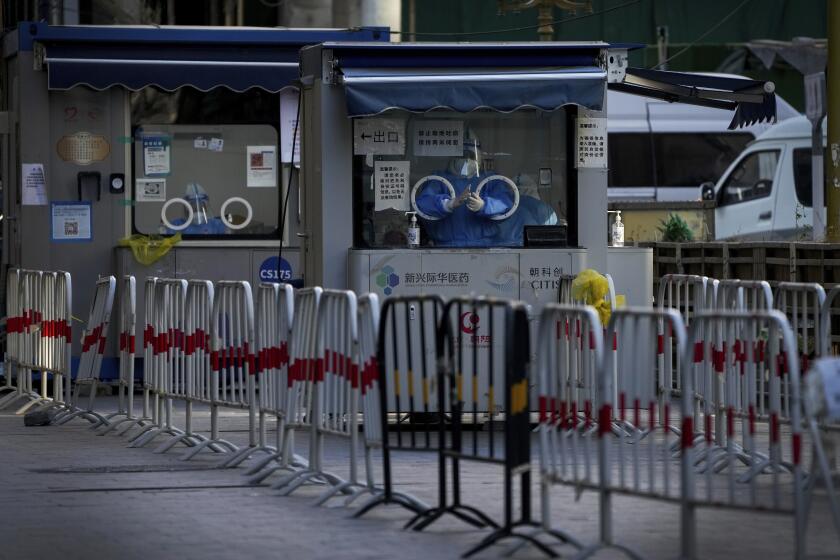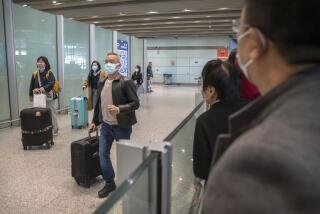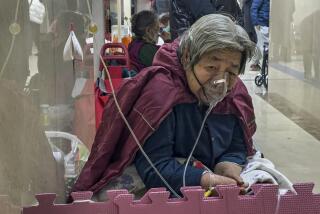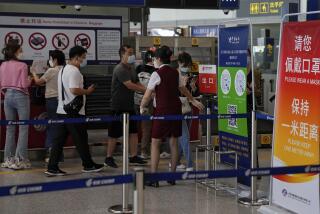Companies welcome end to China quarantines for visitors
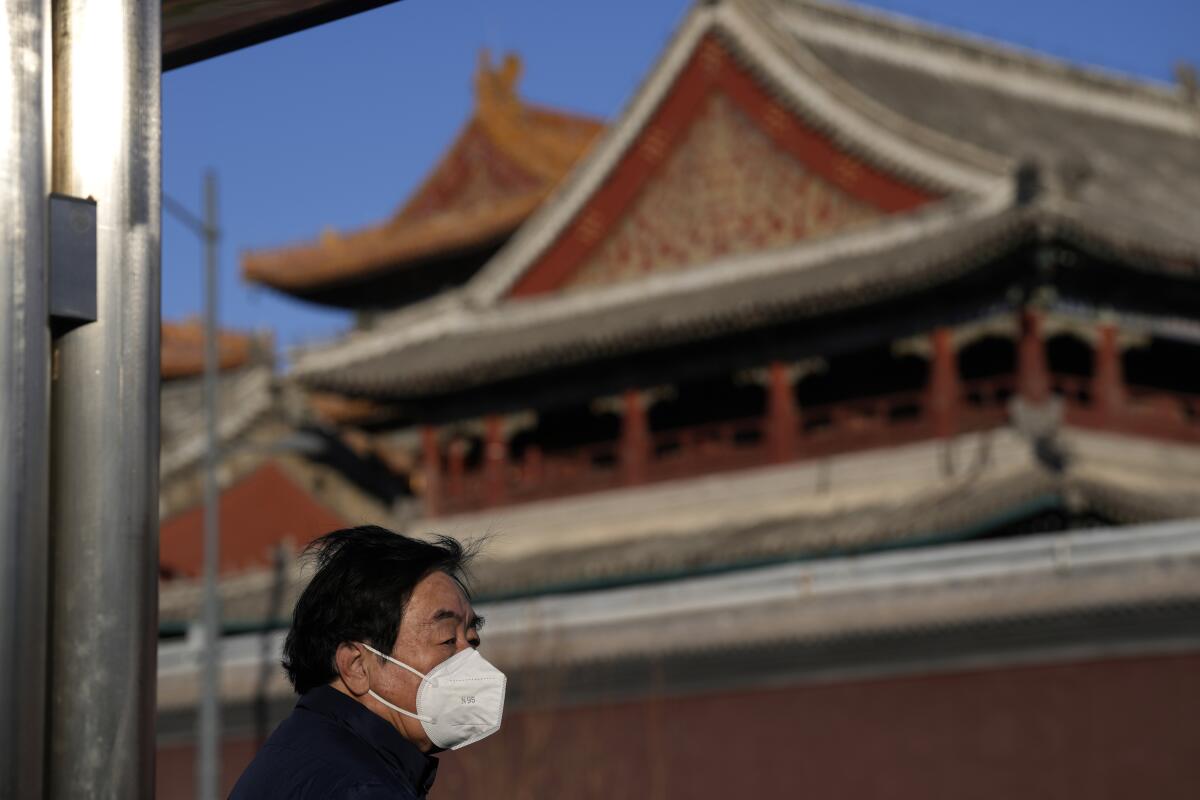
- Share via
BEIJING — Companies welcomed China’s decision to end quarantines for travelers from abroad as an important step to revive slumping business activity while Japan on Tuesday announced restrictions on visitors from the country as infections surge.
The ruling Communist Party’s abrupt decision to lift some of the world’s strictest anti-virus controls comes as it tries to reverse an economic downturn. It has ended curbs that confined millions of people to their homes and sparked protests, but hospitals have been flooded with feverish, wheezing patients as the virus spreads.
Monday’s announcement that quarantines for travelers from abroad will end Jan. 8 is the biggest step toward ending limits that have kept most foreign visitors out of China since early 2020. Quarantines were reduced last month from seven days to five.
Also Monday, the government downgraded the official seriousness of COVID-19 and dropped a requirement for people with the virus to be quarantined. That added to a rapid drumbeat of steps to dismantle controls that had been expected to stay in place at least through mid-2023.
“It finally feels like China has turned the corner,” the chairman of the American Chamber of Commerce in China, Colm Rafferty, said in a statement. He said ending the quarantine “clears the way for resumption of normal business travel.”
Business groups have warned companies were shifting investment away from China because foreign executives were blocked from visiting.
The American chamber said more than 70% of companies that responded to a poll this month expect the impact of the latest wave of outbreaks to last no more than three months, ending in early 2023.
China will drop a COVID-19 quarantine requirement for passengers arriving from abroad starting Jan. 8.
The British Chamber of Commerce expressed hope China will restart normal processing of business visas to allow “resumption of crucial people to people exchanges.” It said that will “contribute to restoring optimism and reinstating China as a priority investment destination.”
The move “will potentially boost business confidence,” but companies are likely to “wait to see how the situation on the ground evolves” before making long-term decisions, the European Chamber of Commerce in China said in a statement.
Meanwhile, Japan announced visitors from China will undergo virus tests starting Friday as a “temporary emergency measure.”
Visitors who test positive will be quarantined for one week, Prime Minister Fumio Kishida announced. He said Japan also would reduce a planned increase in the number of flights between Japan and China “just to be safe.”
“There are growing worries in Japan,” Kishida said.
That follows India’s decision last week to begin requiring a negative virus test for travelers from China, Japan, Hong Kong, South Korea and Thailand.
India also randomly tests 2% of airline passengers arriving from abroad. Visitors who test positive or have symptoms will be quarantined.
Could the COVID-19 surge in China unleash a new coronavirus mutant on the world. Maybe it could. Maybe not.
A foreign ministry spokesman defended China’s handling of the latest outbreaks.
“The Chinese government has always followed the principle of science-based and targeted measures,” said Wang Wenbin. He called for a “science-based response and coordinated approach” to keep travel safe and “promote a steady and sound recovery of the world economy.”
China kept its infection rate low with a “zero COVID” strategy that aimed to stamp out virus transmission by isolating every case. That prompted complaints controls were too extreme and counterproductive.
Starting last month, the ruling party has gradually joined the United States and other governments that are trying to live with the virus by treating infections instead of imposing blanket quarantines on cities or neighborhoods.
The ruling party announced changes Nov. 11 it said were aimed at reducing disruptions after economic activity slid. More changes were announced following protests that erupted Nov. 25 in Shanghai and other cities.
The government has stopped reporting nationwide case numbers but announcements by some cities indicate at least tens and possibly hundreds of millions of people might have been infected since the surge began in early October.
The outbreaks prompted complaints Beijing relaxed controls too abruptly. Officials say the wave began before the changes.
After loosing anti-virus controls amid protests, China tries to strengthen hospitals and set up more intensive-care facilities.
The government “should have done the job in a more meticulous way,” said Lu Haoming, a Beijing architect. “Although the death rate of this disease is not as serious as at the beginning, the first shock has still been quite severe.”
China only counts deaths from pneumonia or respiratory failure in its official COVID-19 toll, a health official said last week. That excludes many deaths other countries would attribute to COVID-19.
Experts have forecast 1 to 2 million deaths in China through the end of 2023.
The National Health Commission announced a campaign Nov. 29 to raise the vaccination rate among older Chinese. Health experts say that is crucial to avoiding a healthcare crisis.
On Monday, the National Health Commission downgraded COVID-19 from a Class A infectious disease to a Class B disease and removed it from the list of illnesses that require quarantine. It said authorities would stop tracking down close contacts and designating areas as being at high or low risk of infection.
More to Read
Sign up for Essential California
The most important California stories and recommendations in your inbox every morning.
You may occasionally receive promotional content from the Los Angeles Times.
